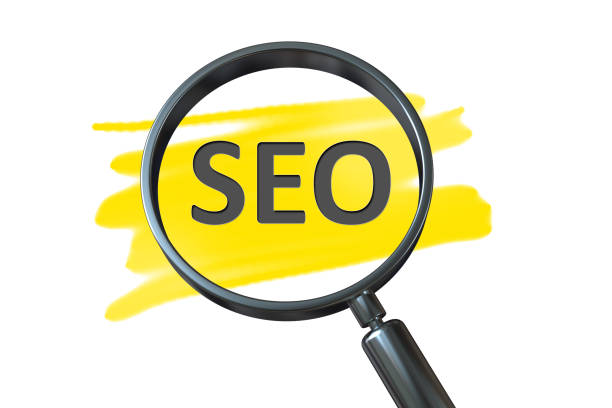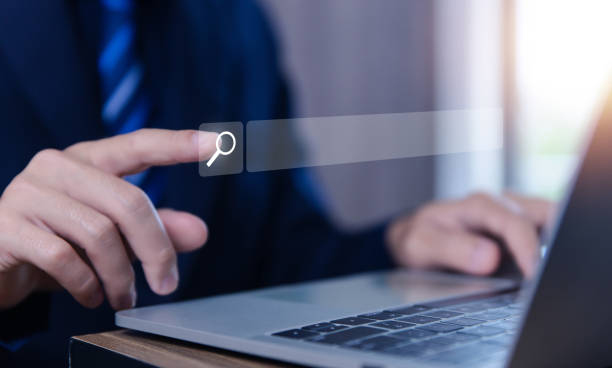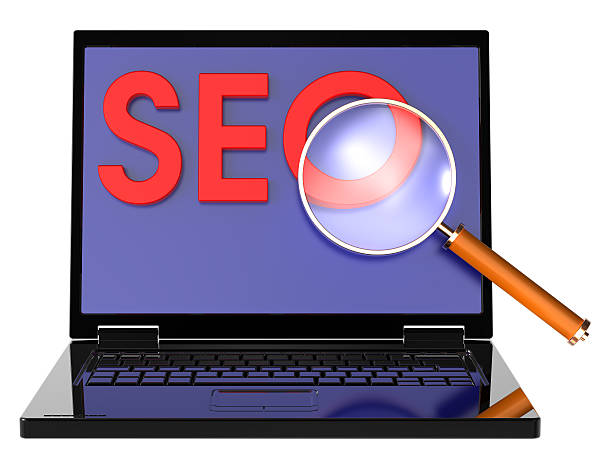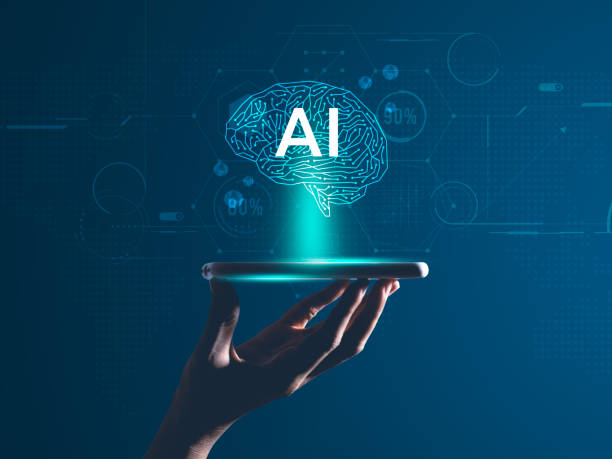What is SEO and Why is it Important for Your Business?

SEO (Search Engine Optimization) is a set of techniques and strategies used to improve your website’s ranking in search engine results like Google, Bing, and Yahoo.
The main goal of SEO is to increase your website’s organic (unpaid) traffic.
In today’s world, most people use search engines to find the information, products, and services they need.
If your website has a high ranking in search results, the probability that users will click on it and visit it increases.
In other words, SEO helps you to be seen and attract potential customers to your business.
Suppose you have a small online clothing sales business.
If your website appears on the first page of Google results for keywords such as “buy women’s clothes online” or “latest men’s clothing models”, you can expect your website traffic to increase and, consequently, your sales to grow.
#Search_Engine_Optimization
SEO is not limited to just improving website rankings.
A successful SEO strategy also improves your website’s user experience (UX).
For example, SEO includes optimizing website loading speed, creating high-quality and relevant content, and designing a logical structure for the website.
All these factors contribute to improving the user experience, making visitors stay longer on your website and increasing their likelihood of making a purchase.
Disappointed with your e-commerce site’s low conversion rate? Rasawb transforms your online store into a powerful tool for attracting and converting customers!
✅ Significant increase in visitor-to-buyer conversion rate
✅ Exceptional user experience to boost customer satisfaction and loyalty⚡ Get free consultation from Rasawb!
Keyword Research: Identifying Golden Opportunities

Keyword research is one of the most important steps in the SEO process.
In this stage, you need to identify the words and phrases that users employ to search for your products and services on search engines.
Selecting the right keywords forms the foundation of your SEO strategy.
To start, you can use various free and paid tools.
Google Keyword Planner is a popular free tool that helps you find search volume, competition level, and related keywords.
Other tools like Ahrefs, Semrush, and Moz Keyword Explorer also offer more advanced features.
When choosing keywords, pay attention to the following points:
- Relevance: Keywords must be relevant to your products and services.
- Search Volume: Keywords should have a suitable search volume.
In other words, a significant number of users should be searching for these keywords. - Competition Level: Keywords should not have excessively high competition.
High competition means that many other websites are also optimized for these keywords, making it difficult to compete with them.
Furthermore, it’s advisable to use Long-Tail Keywords.
These keywords usually have lower search volume, but their competition is also lower, and they are more targeted.
For instance, instead of using the keyword “shoes”, you can use the long-tail keyword “buy original men’s sports shoes”.
On-Page SEO: Optimization for Search Engines and Users

On-Page SEO involves optimizing various elements of your website to make it appealing to both search engines and users.
These elements include:
- Title Tag: The title tag is the most important factor in on-page SEO.
The title tag should be relevant to the page’s content and include primary keywords. - Meta Description: The meta description is a summary of the page’s content displayed in search results.
The meta description should be engaging and persuasive to encourage users to click. - URL Structure: Your website’s page URLs should be short, relevant, and include keywords.
- Heading Tags: Use heading tags (H1, H2, H3, etc.) to organize the page’s content.
The H1 tag should contain the main title of the page, and H2 and H3 tags should be used for subheadings. - Content: Your website’s content should be high-quality, relevant, unique, and valuable.
Use keywords naturally within the text and avoid keyword stuffing. - Images: Your website’s images should be optimized.
Image file sizes should be small to increase page loading speed.
Also, use Alt tags to describe images. - Internal Links: Use internal links to connect different pages of your website.
This helps search engines better understand your website’s structure and increases your website’s traffic.
Optimizing the Page Title (Title Tag)
The page title is one of the most important factors in on-page SEO.
A good page title should be attractive to search engines and also encourage users to click.
Here are some tips for optimizing your page title:
- Include the main keyword: The page title should include the main keyword of the page.
It is best to place the keyword at the beginning of the title. - Be relevant to the page content: The page title should accurately describe the page’s content.
Avoid using misleading titles. - Be engaging and persuasive: The page title should be engaging and persuasive to encourage users to click.
You can use powerful words like “free”, “new”, “best”, etc. - Be concise: The length of the page title should be less than 60 characters to be fully displayed in search results.
- Be unique: The page title of each page should be unique.
Avoid using duplicate titles.
| Element | Importance | Description |
|---|---|---|
| Title Tag | Very Important | Includes keyword, short, engaging |
| Meta Description | Important | Content summary, engaging, persuasive |
| Heading Tags | Important | Content organization, includes keywords |
| Content | Very Important | High quality, relevant, unique |
| Images | Important | Optimized, low file size, Alt tag |
Off-Page SEO: Boosting Website Credibility and Authority

Off-Page SEO involves actions you take outside your website to improve its ranking in search results.
These actions include:
- Link Building: Link building is one of the most important factors in off-page SEO.
Links act as a vote of confidence from other websites to your website.
The more inbound links your website has, and the more authoritative those websites are, the more your website’s credibility and authority in the eyes of search engines will increase. - Social Media Marketing: Activity on social networks can help increase your website’s traffic and boost your brand’s credibility.
- Content Marketing: Creating and publishing high-quality and valuable content can help attract inbound links and increase your website’s traffic.
- Branding: Strong branding can help increase your website’s credibility and authority.
Important Link Building Tips
- Quality is more important than quantity: Instead of focusing on the number of links, focus on the quality of links.
Inbound links from authoritative and relevant websites have more value. - Use natural links: Avoid buying links and other unnatural link-building methods.
These methods might yield short-term results but will lead to your website being penalized by search engines in the long run. - Use appropriate Anchor Text: Anchor text is the text that points to a link.
Use appropriate anchor text that is relevant to the content of the destination page.
Worried about losing customers because you don’t have a professional e-commerce site?
With e-commerce website design by Rasawb, forget these worries!
✅ Significant increase in sales and visitor-to-customer conversion rates
✅ Professional and user-friendly design that builds customer trust
⚡ Get a free consultation from Rasawb now!
Mobile Optimization: Designing for the Mobile World

Given the increasing use of mobile devices for internet searches, optimizing your website for mobile is of particular importance.
If your website is not mobile-optimized, you will create a poor user experience for visitors, and your website’s ranking in search results will decrease.
#Mobile_Friendly
Important Mobile Optimization Tips
- Responsive Design: Use responsive design so that your website automatically adapts to the screen size of different devices.
- Loading Speed: Your website’s loading speed on mobile devices should be high.
Use optimized images and lightweight code. - Ease of Use: Your website should be easy to use on mobile devices.
Use large, touch-friendly buttons and legible fonts. - No Flash: Do not use Flash on your website.
Flash is not supported on mobile devices and slows down page loading.
Mobile-Friendly Test
To ensure your website is mobile-optimized, you can use Google’s Mobile-Friendly Test tool.
This tool shows you how your website appears on mobile devices and what issues it has.
Website Speed: Key to User Experience and SEO Ranking

Website loading speed is an important factor in user experience and SEO ranking.
Users expect websites to load quickly, and if your website is slow, the likelihood of users leaving it and going to another website increases.
Furthermore, Google also considers website loading speed as one of its ranking factors.
#Website_Speed
Factors Affecting Website Speed
- Hosting: Choosing suitable, high-speed hosting significantly impacts your website’s speed.
- Images: Unoptimized and large-sized images reduce website loading speed.
- Code: Lightweight and optimized code helps increase website speed.
- Cache: Using a caching system makes your website pages load faster.
- CDN: Using a CDN (Content Delivery Network) ensures your website content is loaded from servers closer to users, increasing loading speed.
Website Speed Testing Tools
To test your website’s speed, you can use various tools such as Google PageSpeed Insights, GTmetrix, and WebPageTest.
These tools show you what issues your website has and what steps you can take to improve its speed.
Optimizing and increasing website speed is one of the things you definitely need to pay attention to if you are an #SEO specialist.
Competitor Analysis: Learning from the Best

Competitor analysis is one of the most important steps in an SEO strategy.
By examining competitors’ performance, you can identify their strengths and weaknesses and use their experiences to improve your own SEO strategy.
In this section, we will discuss how to conduct competitor analysis and the tools required for it.
Steps for Competitor Analysis
- Identify Competitors: First, you need to identify your main competitors.
To do this, you can search your main keywords on Google and identify the websites that rank highest in the results. - Analyze Keywords: Examine the keywords for which competitors are ranking.
For this, you can use tools like Ahrefs and Semrush. - Review Content: Analyze the content of competitor websites.
Pay attention to the quality, length, and usage of keywords within the content. - Examine Link Building: Investigate the inbound links to competitor websites.
Pay attention to the quality and number of links. - Check Social Media: Review competitor activity on social media.
Pay attention to the number of followers, engagement rate, and the type of content they publish.
Competitor Analysis Tools
- Ahrefs
- Semrush
- Moz
- SimilarWeb
By using these tools, you can gather comprehensive information about competitor performance and leverage it to improve your SEO strategy.
| Factor | Description | Importance |
|---|---|---|
| Keywords | Identifying competitors’ main keywords | Very Important |
| Content | Reviewing the quality and quantity of competitor content | Important |
| Link Building | Analyzing inbound links to competitor websites | Very Important |
| Social Media | Reviewing competitor activity on social media | Medium |
Local SEO: Attracting Customers Near You

Local SEO refers to optimizing your website and business profile to attract local customers.
If your business has a physical location (such as a store, restaurant, clinic, etc.), local SEO can help you attract nearby customers.
#Local_SEO
Local SEO Actions
- Register your business on Google My Business: Google My Business is a free profile that allows you to register your business information (such as name, address, phone number, working hours, etc.) on Google.
- Optimize your Google My Business profile: Optimize your Google My Business profile with accurate and complete information.
Use high-quality images and provide detailed descriptions of your business. - Get customer reviews: Ask your customers to post reviews about your business on Google My Business.
Positive customer reviews help increase your business’s credibility. - Optimize your website for local keywords: Use local keywords (such as “Italian restaurant in Tehran”) in your page title, meta description, and website content.
- Local link building: Get links from local websites (such as local news websites, local business directories, etc.).
Importance of Local SEO
Local SEO is extremely important for businesses with a physical location.
Local SEO helps you achieve a higher ranking in local Google search results (such as Google Maps) and attract nearby customers.
Are your online sales not as you expect? With Rasawb, solve the problem of low sales and poor user experience forever!
✅ Increase visitor-to-customer conversion rates significantly
✅ Create an enjoyable user experience and boost customer trust
⚡ Contact us for a free consultation now!
Measuring and Analyzing SEO Results: Monitoring Progress

Measuring and analyzing SEO results is one of the most important steps in an SEO strategy.
By measuring and analyzing results, you can understand how effective your SEO strategy is and what changes need to be made.
In this section, we will discuss the most important SEO Key Performance Indicators (KPIs) and the tools required for measuring and analyzing results.
#SEO_Analysis
SEO Key Performance Indicators (KPIs)
- Organic Traffic: Organic traffic is the number of visitors who reach your website through search engine results.
Increasing organic traffic is one of the main goals of SEO. - Keyword Ranking: Keyword ranking is your website’s position in search results for specific keywords.
Improving keyword ranking helps increase organic traffic. - Click-Through Rate (CTR): CTR is the percentage of users who click on your website after seeing it in search results.
Increasing CTR helps improve organic traffic. - Bounce Rate: Bounce rate is the percentage of visitors who leave your website after entering it, without visiting any other pages.
Reducing bounce rate helps improve user experience. - Time on Site: Time on site is the average time visitors spend on your website.
Increasing time on site helps improve user experience. - Conversion: Conversion is an action that visitors take on your website (such as purchasing a product, signing up for a newsletter, etc.).
Increasing the conversion rate helps increase your business’s revenue.
SEO Measurement and Analysis Tools
- Google Analytics: Google Analytics is a free tool that allows you to measure and analyze your website’s traffic.
- Google Search Console: Google Search Console is a free tool that allows you to monitor your website’s performance in Google search results.
- Ahrefs: Ahrefs is a paid tool that allows you to check keyword rankings, inbound links, and competitor performance.
- Semrush: Semrush is a paid tool that allows you to check keyword rankings, organic traffic, and competitor performance.
The Future of SEO: Upcoming Changes and Trends

The world of SEO is constantly changing, and search engine algorithms are continuously updated.
To succeed in SEO, you need to be aware of the latest changes and upcoming trends.
In this section, we will discuss some of the most important upcoming changes and trends in SEO.
- Artificial Intelligence: AI is changing how search engines operate.
Search engines use AI to better understand user intent and provide more accurate results. - Voice Search: Voice search is rapidly increasing.
To optimize your website for voice search, you should use long-tail and question-based keywords and focus on providing short and clear answers to user questions. - Video Content: Video content has become one of the most popular types of content on the internet.
To attract an audience and increase your website’s traffic, you can use video content. - User Experience: User experience has become one of the most important ranking factors in SEO.
To improve your website’s user experience, you should pay attention to loading speed, responsive design, ease of use, and content quality.
Considering these changes and trends, to succeed in SEO, you must continuously update your knowledge and adapt your SEO strategy to new conditions.
#Future_of_SEO
Frequently Asked Questions
| Question | Answer |
|---|---|
| What is SEO? | SEO, or Search Engine Optimization, is a process for increasing the quality and quantity of website traffic by improving the site’s ranking in organic search engine results like Google. |
| What are the main types of SEO? | SEO is divided into three main categories: On-Page SEO, Off-Page SEO, and Technical SEO. |
| What does On-Page SEO include? | On-Page SEO involves optimizing elements within the website, such as keywords, title tags, meta descriptions, content, URL structure, images, and internal links. |
| What is Off-Page SEO? | Off-Page SEO refers to activities outside the website that help improve its ranking, such as backlink building, social media marketing, and brand mentions. |
| What is Technical SEO? | Technical SEO deals with optimizing the technical aspects of a website to help search engines crawl and index it better. This includes site speed, mobile-friendliness, site structure, sitemaps, and the Robots.txt file. |
| What role do Keywords play in SEO? | Keywords are phrases that users enter into search engines. Proper and targeted use of relevant keywords in content and site elements helps search engines understand your page’s topic and display it for relevant searches. |
| What is a Backlink and why is it important? | A backlink, or inbound link, is a link from one website to another. Backlinks act as a “vote of confidence” from other sites to your website and play a significant role in its credibility and ranking improvement, especially if they come from authoritative sites. |
| How does quality content affect SEO? | High-quality, relevant, comprehensive, and unique content not only attracts and retains users but also shows search engines that your page is valuable. This helps improve rankings, reduce bounce rates, and increase user time on site. |
| Why is website loading speed important for SEO? | Website loading speed is an important ranking factor for Google. Faster sites offer a better user experience, have lower bounce rates, and are preferred by search engines. |
| Is SEO a one-time process? | No, SEO is an ongoing and long-term process. Search engine algorithms are constantly changing, competition is increasing, and website content also needs updating. Therefore, SEO requires continuous monitoring, analysis, and optimization. |
And other advertising services from Rasa Web Advertising Agency
- Smart Link Building: A professional solution for digital branding focusing on precise audience targeting.
- Smart Direct Marketing: Designed for businesses seeking to improve SEO ranking through custom programming.
- Smart Link Building: A professional solution for digital branding focusing on precise audience targeting.
- Smart Advertising Campaign: A fast and efficient solution for online growth focusing on intelligent data analysis.
- Smart Marketplace: Designed for businesses seeking online growth through intelligent data analysis.
And over a hundred other services in the field of internet advertising, advertising consulting, and organizational solutions
Internet Advertising | Advertising Strategy | Advertorials
Resources
Comprehensive SEO Guide
TopLearn SEO Training
IranDL SEO Articles
Latest SEO Trends
✅ Rasawb Afarin Digital Marketing Agency, by providing comprehensive and innovative solutions, paves the way for your business’s growth and prominence in the digital world. From modern UI website design and search engine optimization to targeted advertising campaigns, we are committed to building a brilliant future for your brand.
📍 Tehran, Mirdamad Street, next to Bank Markazi, Southern Kazeroon Alley, Ramin Alley, No. 6


